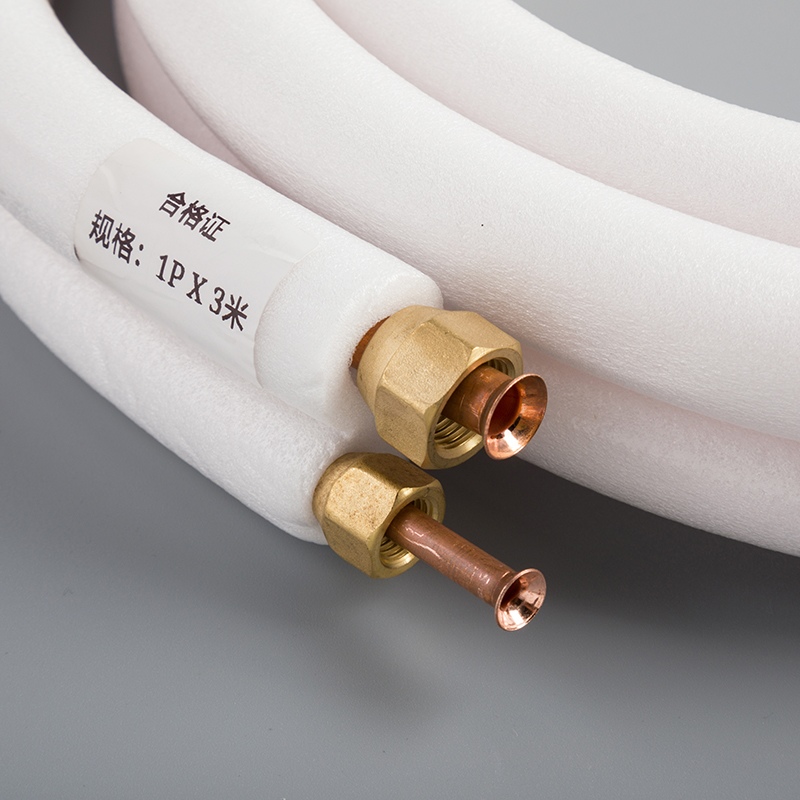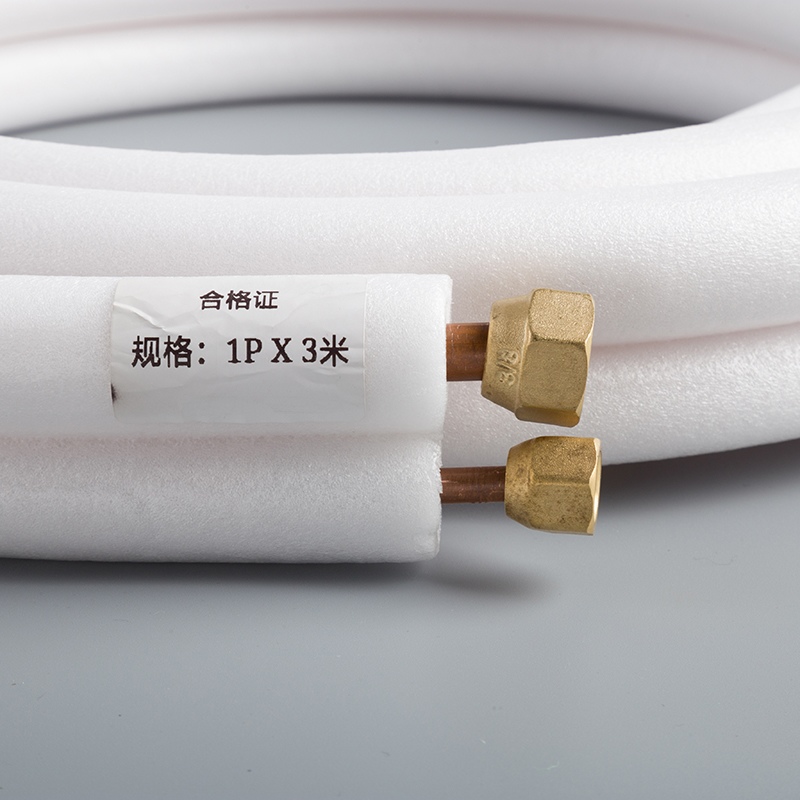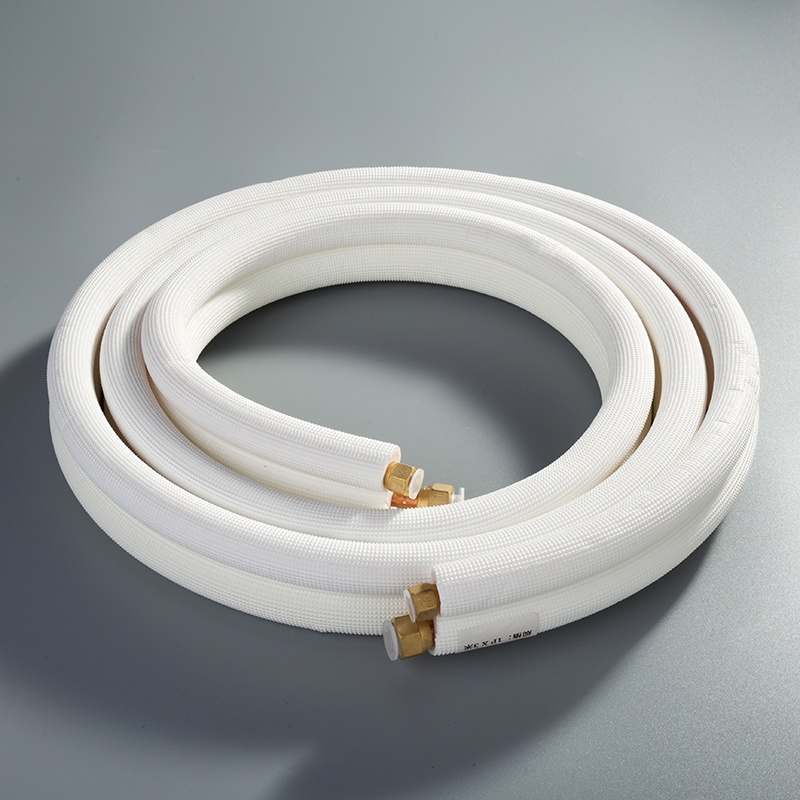Comparing Copper Pipes for Air Conditioning Systems

Selecting the appropriate air conditioner copper pipes for your system is essential. Pure copper pipe fittings offer dependable performance and reasonable pricing, making them a favored option. They are excellent at resisting corrosion, which ensures durability and longevity. There are various types of air conditioner copper pipes, each with distinct characteristics. Type L copper pipes strike a balance between strength and cost-effectiveness, while Type M pipes offer a more economical choice. Soft copper pipes provide flexibility, facilitating easy installation. Pure copper pipe fittings and air conditioner copper pipes are vital components in HVAC systems, ensuring efficient operation. Understanding these options enables you to make informed decisions.
Types of Copper Pipes

Type L Copper Pipes
Description
Type L Copper Pipes are widely used in interior plumbing, fire protection, and some HVAC applications. You can find them in both rigid and flexible forms. They are marked with blue and are suitable for interior water supply systems, hot water heating systems, and fire protection like sprinkler systems. The wall thickness of Type L pipes is moderate, making them thicker than Type M but thinner than Type K.
Advantages
Versatility: Suitable for a wide range of applications, including both residential and commercial settings.
Durability: Offers a good balance between strength and flexibility, making it ideal for various installations.
Corrosion Resistance: Provides excellent resistance to corrosion, ensuring long-lasting performance.
Disadvantages
Cost: More expensive than Type M pipes due to the thicker walls.
Weight: Heavier than Type M, which might make handling and installation slightly more challenging.
Best Use Cases
Interior Plumbing: Ideal for water supply lines within buildings.
Fire Protection Systems: Commonly used in sprinkler systems due to its durability.
Outdoor Installations: Suitable for use outside the home where it will be directly exposed.
Type M Copper Pipes
Description
Type M Copper Pipes have thinner walls compared to Type L and K. They are often used for repairs, replacements, and extensions to interior water supply lines. While not as thick as Type K, they are still durable enough for many applications. However, they are not available in a flexible form.
Advantages
Cost-Effective: Less copper means a lower price, making it a budget-friendly option.
Ease of Use: Lightweight and easy to cut and fit, making it a favorite among DIY enthusiasts.
Disadvantages
Limited Durability: Not as robust as Type L or K, which may limit its use in high-pressure applications.
Code Restrictions: Not always allowed by plumbing codes in all areas, so you should check with local authorities.
Best Use Cases
Residential Projects: Often used in homes where cost is a primary consideration.
Low-Pressure Applications: Suitable for installations where high pressure is not a concern.
Type K Copper Pipes
Description
Type K Copper Pipes have the thickest walls among the common types, making them the most durable. They are used for water distribution, fire protection, oil, HVAC, and many other applications in the construction industry. Available in both rigid and flexible forms, they are recommended for main water lines and underground installations.
Advantages
Exceptional Durability: Thick walls provide superior strength, ideal for demanding applications.
Versatility: Suitable for a wide range of critical installations, including underground and industrial settings.
Disadvantages
Higher Cost: The increased thickness results in a higher price compared to other types.
Weight: Heavier and potentially more challenging to handle during installation.
Best Use Cases
Underground Installations: Perfect for main water lines and other underground applications.
Industrial Settings: Ideal for environments where durability is paramount.
Pure Copper Pipe Fittings and Air Conditioner Copper Pipes

Pure Copper Pipe Fittings
Description
Pure copper pipe fittings play a crucial role in air conditioning systems. These fittings connect various components, ensuring seamless operation. You will find them in different shapes and sizes, each designed for specific functions. Their primary purpose is to join copper pipes securely, maintaining the integrity of the system.
Advantages
Corrosion Resistance: Pure copper pipe fittings resist corrosion effectively, which enhances their longevity.
Thermal Conductivity: They offer excellent thermal conductivity, ensuring efficient heat transfer.
Reliability: These fittings provide a reliable connection, minimizing the risk of leaks.
Disadvantages
Cost: Pure copper fittings can be more expensive than other materials.
Weight: They are heavier, which might complicate installation in some scenarios.
Best Use Cases
HVAC Systems: Ideal for use in heating, ventilation, and air conditioning systems due to their durability.
Plumbing: Suitable for plumbing applications where corrosion resistance is essential.
Industrial Applications: Used in industries requiring high thermal conductivity.
Air Conditioner Copper Pipes
Description
Air conditioner copper pipes are integral to HVAC systems. They transport refrigerant between the indoor and outdoor units. These pipes come in various types, including Type K, L, and M, each offering unique benefits. You will often see them insulated to prevent energy loss and condensation.
Advantages
Durability: Copper pipes, especially Type K, offer exceptional durability and strength.
Flexibility: Soft copper pipes provide flexibility, making installation easier.
Efficiency: They ensure efficient operation by maintaining optimal refrigerant flow.
Disadvantages
Cost: Copper pipes can be costly, particularly those with thicker walls like Type K.
Installation Complexity: Installing rigid copper pipes may require professional expertise.
Best Use Cases
Residential Air Conditioning: Commonly used in home air conditioning systems for their reliability.
Commercial HVAC Systems: Suitable for commercial settings where efficiency and durability are priorities.
Refrigeration: Used in refrigeration systems due to their excellent thermal properties.
Factors to Consider When choosing copper pipes
Durability
Importance of Durability
When selecting copper pipes for your air conditioning system, durability stands as a crucial factor. Durable pipes ensure the longevity and reliability of your system. Opting for robust options like Type K or Type L copper pipes can lead to reduced maintenance costs and enhanced system longevity. These types excel in strength, making them suitable for demanding applications. For residential use, Type L pipes offer a balanced solution between durability and cost-effectiveness.
How to Assess Durability
To assess the durability of copper pipes, consider the wall thickness and material quality. Type K pipes, known for their exceptional durability, have the thickest walls among common types. This makes them ideal for underground installations and industrial settings. Evaluate the environment where the pipes will be installed. For areas prone to corrosion, choose pipes with excellent corrosion resistance to ensure long-lasting performance.
Cost
Budget Considerations
Cost plays a significant role in your decision-making process. You need to balance your budget with the quality of the pipes. Type M copper pipes, with thinner walls, offer a more economical choice. They are suitable for low-pressure applications and residential projects where cost is a primary concern. However, remember that cheaper options might not always provide the durability required for certain applications.
Cost vs. Quality
When weighing cost against quality, consider the long-term benefits of investing in higher-quality pipes. While Type K pipes may come with a higher price tag, their durability can translate into fewer repairs and replacements over time. This investment can save you money in the long run. Type L pipes strike a balance between cost and reliability, making them a popular choice for many homeowners.
Installation Requirements
Ease of Installation
Ease of installation is another factor to consider. Soft copper pipes provide flexibility, facilitating easy installation, especially in tight spaces. They allow for bending without the need for additional fittings, reducing installation time and complexity. On the other hand, rigid pipes may require more effort and expertise during installation.
Professional vs. DIY Installation
Decide whether you will handle the installation yourself or hire a professional. DIY enthusiasts might prefer Type M pipes due to their lightweight nature and ease of handling. However, for more complex installations involving Type K or Type L pipes, professional installation is advisable. Professionals possess the skills and tools necessary to ensure a secure and efficient setup, minimizing the risk of leaks and other issues.
Environmental Impact
Sustainability of Copper Pipes
When you choose copper pipes for your air conditioning system, you contribute to a sustainable future. Copper is a natural resource that can be recycled indefinitely without losing its properties. This makes it an environmentally friendly choice. By opting for Pure copper pipe fittings Air conditioner copper pipes, you support a cycle of reuse that reduces the need for new raw materials. This not only conserves natural resources but also minimizes the energy consumption associated with mining and processing new copper.
Copper's durability further enhances its sustainability. Type K and Type L copper pipes, known for their strength and longevity, require less frequent replacement. This reduces waste and the environmental impact associated with manufacturing and transporting new pipes. As a result, you can enjoy a reliable air conditioning system while minimizing your ecological footprint.
Recycling and Disposal
Recycling plays a crucial role in the lifecycle of Pure copper pipe fittings Air conditioner copper pipes. When your copper pipes reach the end of their service life, you can recycle them easily. Copper recycling facilities are widely available, ensuring that the material is reused rather than discarded in landfills. This process not only conserves resources but also reduces greenhouse gas emissions from the production of new copper.
To dispose of your copper pipes responsibly, contact local recycling centers or scrap metal dealers. They can guide you on how to prepare and deliver the pipes for recycling. By taking this step, you contribute to a circular economy where materials are continuously reused, benefiting both the environment and the economy.
In summary, choosing Pure copper pipe fittings Air conditioner copper pipes supports sustainability through their recyclability and durability. By making informed decisions about the materials you use, you can enjoy efficient air conditioning while promoting environmental responsibility.
In summary, selecting the right copper pipes for your air conditioning system involves understanding the unique characteristics of each type. Type K pipes offer exceptional durability, making them ideal for demanding applications. Type L pipes provide a balance between strength and cost-effectiveness, while Type M pipes serve as a budget-friendly option for low-pressure settings. Consider factors like durability, cost, installation requirements, and environmental impact when making your decision. By evaluating these aspects, you ensure a reliable and efficient HVAC system that meets your specific needs.
See Also
Benefits of Opting for Copper Tubing in Air Conditioning
The Impact of Pure Copper Piping on Air Conditioning
Essential Role of Pure Copper Tubing in Air Conditioning Efficiency
Key Factors in Copper Tubing's Revolution of Air Conditioning
Exploring Efficiency: Copper vs. Aluminum Tubing in Air Conditioning


